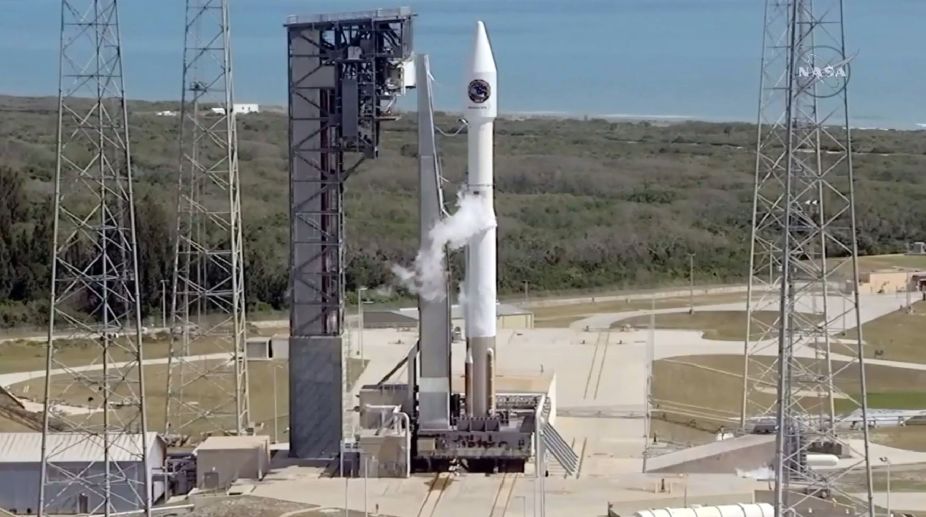The countdown for the launch Friday evening of the Geosynchronous Satellite Launch Vehicle (GSLV-MkII) rocket carrying the South Asia satellite or GSAT-9 is progressing smoothly, an official of the Indian space agency said.
The rocket is expected to blast off at 4.57 p.m. on Friday from the second launch pad at Satish Dhawan Space Centre in Sriharikota in Andhra Pradesh around 80 km from here.
Advertisement
The 28-hour countdown for the rocket launch began at 12.57 p.m. on Thursday.
Standing 49 metres tall and weighing around 450 ton, the GSLV is a three stage rocket.
The first stage is fired with solid fuel, the second with liquid fuel and the third is the cryogenic engine.
According to an official of Indian Space Research Organisation (ISRO) the liquid propellant for the second stage has been filled up and the fuelling of cryogenic engine is on.
The GSAT-9 is being launched with an objective to provide different communication applications in Ku-band with coverage over South Asian countries, the ISRO had said.
On April 30, Prime Minister Narendra Modi said the South Asia Satellite, will go a long way in addressing the region's economic and developmental priorities.
"The capacities of this satellite and the facilities it provides will go a long way in addressing South Asia's economic and developmental priorities," he said in his monthly radio address 'Mann Ki Baat'.
"Natural resources mapping, telemedicine, the field of education, deeper IT connectivity or fostering people-to-people contact, this satellite will prove to be a boon in the progress of the entire region."
"It is an important step by India to enhance cooperation with the entire South Asia…It is an invaluable gift. This is an appropriate example of our commitment towards South Asia. I welcome all the South Asian countries who have joined us on this momentous endeavour," he had said.
The space agency said that the GSAT-9 is configured around the ISRO's standard I-2K bus, with a lift-off mass of 2,230 kg, and the satellite's main structure is cuboid in shape built around a central cylinder with a mission life of more than 12 years.
According to an official, ISRO on experimental basis decided to have electric power for the satellite.
"We have not reduced the volume of the traditional on-board fuel because of the electric power. We have added electric power facility to check its performance for use in future satellites," the official told IANS.
He said the next satellite with electric power will be the GSAT-20 slated for launch in 2018.
Meanwhile, the ISRO is also gearing up to launch its heaviest rocket GSLV-Mk III later in May.











